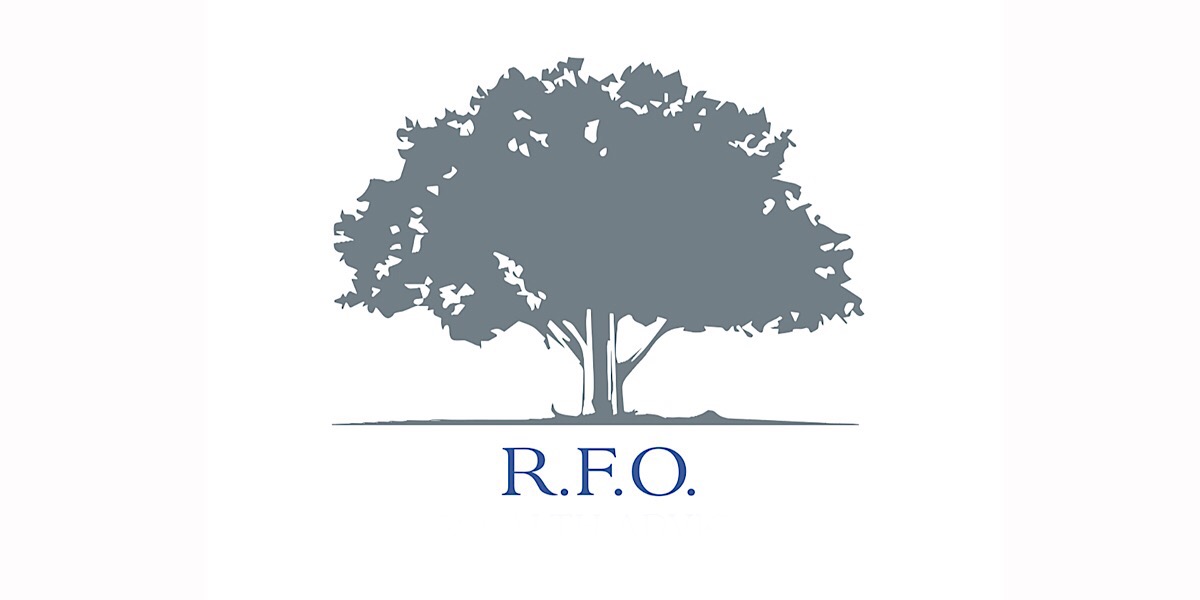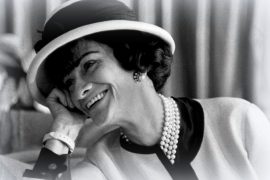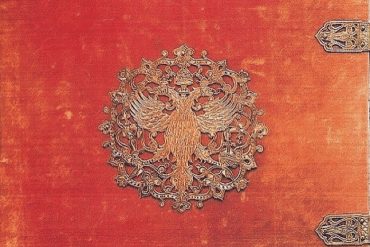An Exceptional Opportunity for Carpet Connoisseurs
Following the inaugural Rugs & Carpets from Distinguished Collections sale held in London, November 2015, Sotheby’s is delighted to announce our second sale to be held in New Bond Street on 1st November 2016. The sale will focus on key collecting fields, inclusive of fine 17th-century Persian works, early tribal pieces and expanding to the early 20th century; also incorporating fine quality decorative carpets.
Please note that there may be restrictions on the import of property of Iranian origin into some or all member countries of the Gulf Co-Operation Council. Any buyers planning to import property of Iranian origin into any of these countries should satisfy themselves of the relevant import regime. Sotheby’s will not assist buyers with the shipment of such items into countries of the Gulf Co-Operation Council.
A unusually fine Saber Mashad carpet, Northeast Persia Estimate 90,000 — 120,000 GBP LOT SOLD. 269,000 GBP – approximately 425 by 321cm; 13ft. 11in., 10ft. 6in. second quarter 20th century, with inscription ‘Saber’
At the turn of the 20th century there was a resurgence of grand, highly refined, carpet weaving in Mashad; Abbas-qoli Saber is one of the master weavers who pioneered the revival of workshops producing superior quality pieces. A former student of the great master Amoghli, Saber was renowned for his skill and completed commissions both for Eastern and Western officials. The carpets he produced have a richness of palette, using the finest of wools, and are inspired from great classical carpets of the past. Roubeni purchased this particular carpet with the assistance of Gholam Ali Kirmanshahi, a highly respected carpet broker in the Bazaar in Tehran. By repute, it had come from the collection of Fawzia Faud, Queen of Iran from 1939-45 as the first wife of Mohammad Reza Pahlavi.
This carpet has an unusually high knot density for a work of such proportions –in excess of 20,000,000 (20 million) – a mark of the extraordinary skill and diligence one can associate with works produced from the Saber workshop. For further information on the masterweavers in Mashad see Shaffer, D., ‘Amoghli’, Hali, Summer 2016, issue 188, p. 107.
A Yarkand Silk Carpet, East Turkestan Estimate 20,000 — 30,000 GBP LOT SOLD. 62,500 GBPHerrmann, Eberhart, Von Uschak bis Yarkand, Seltene Orientteppiche aus vier Jahrhunderten, Munich, Cat. No. 111, p. 157.
This is an example from a distinct group of silk carpets with a ‘Pomegranate’ design, from East Turkestan, produced in the oasis towns of Yarkand and Kashgar, in the 19th century. They have a marked vertical axis and the main design incorporates barely visible, small vases along the edge of both end of the main field, from which emanate the elegant pomegranate fruiting stems with small three-point leaves. The main border design with repeat pattern of small rosettes, against madder, alternating with golden or blue narrow guards with variations of a repeat motif, contrast against the usually azure blue, sometimes dark golden yellow, grounds of the main field.For comprehensive discussion of this carpet type and comparable Yarkand examples to the present carpet, with the same ‘Pomegranate-Vase’ pattern, together with rosette motifs in the borders, see Bidder, Hans, Carpets from Eastern Turkestan, Washington International Associates, 1979, Chp.III, The Khotan Carpets, 1.The Vase-Pomegranate Pattern, pp.49-53, plates I & II, which illustrates an example with the pomegranate design against an indigo ground, 17th/ 18th century, and another against a saffron yellow ground, 18th century. For another similar comparable Pomegranate carpet, Yarkand/Kashgar, 19th century, with azure blue ground and red, yellow and ivory borders, see Spuhler, Friedrich, The Thyssen-Bornemisza Collection: Carpets and Textiles, London, 1988, East Turkestan Carpets, No.50, pp.196-199.
A Kashan carpet, attributed to the Mohtasham workshop, Central Persia Estimate30,000 — 50,000 GBP LOT SOLD. 68,750 GBP
Technical Analysis:Pile: Wool, Z spun, 4Sw plied, asymmetrical open to the left
Warps: Silk, S spun, 3S plied , depressed
Wefts: Possibly silk, as warps
Sidecords: Silk, magenta, S spun
Colours: Dark indigo, azure blue (abrash to blue/grey), sky blue (abrash to blue/grey),ivory, grey/taupe, teal green (abrash to mint green), pale sand yellow, dark sand yellow, persimmon, dark terracotta, light olive green, light tan, black- Knot Density: V:7-8/cm; H: 8/cm – approximately 307 by 226cm; 10ft. 1in., 7ft. 5in. circa 1905.
The term ‘Mohtasham’ has long been used within the industry to describe works produced in Kashan, toward the end of the 19th and beginning of the 20th century, of outstanding quality and superlative design, a point elegantly outlined in Ian Bennett’s article ‘The Myth of Mohtasham’, Hali, 1987, Issue 35, pp.44-49, where he discusses the term in a wider sense with specialists of the day. For further information on ‘Mohtasham’ terminology and meaning see page 48 of this article, and lots 91, 92, 131, 135, 137, 147 and 153 as examples within this sale. However in a scholarly sense, ‘Mohtasham’ refers to the master weaver Hajji Mollah Mohammad Hassan Mohtasham (active circa 1840 – 1885). There are only a very a small, known, group of works signed by the master himself and a further, equally minimal, selection either inscribed to his workshop or to the ‘son of Mohtasham’, see Azadi, Siawosch, ‘The Mark of Mohtasham’ , Hali, 2009, Issue 160, pp. 66 – 73.
Naturally there is a sense of intrigue and mystery to this master draftsman. Not only do very few works of his exist but very little is known about him – indeed so much so that even the spelling of his name raises differences of opinion, we defer to Siawosch Azadi’s spelling who has researched the subject extensively. Aside from the signed examples mentioned in the Azadi article, we have very little information to draw upon other than whisperings in the Bazaars of Central Iran, adding yet more to the legend. Expanded on by Cecil Edwards in The Persian Carpet, p. 334, where he discusses the tale of a merchant of fine Manchester imported merino wool. Edwards anecdote records the merchant’s merino wool was out-priced by English machine made wools. Not wishing to waste his stock he asked his wife, a former weaver from Arak (Sultanabad), to turn this wool into a rug. Supposedly the quality and beauty of the finished piece spurred the revival of wool carpet weaving in Kashan again. Sadly this cannot be strictly true – the court workshops in Kashan were highly active during the 16th and 17th centuries, producing some of the finest carpets of the time, but had been forced to stop production at the turn of the 18th century. Yet production overall in the area did not stop, so sadly there must be a degree of scepticism to the tale. Also that one merchant could single handedly revive a lost art form does stretch the imagination, however it is interesting that Edwards names the weavers as Hajji Mollah Hassan and he estimates the tale took place sixty years prior to his writing the entry in the book, placing it circa 1890. Azadi also touches on this connection going further to say that he, through an elderly Kashani retired rug merchant, was told that Mohtasham the elder was alive in 1896, by then an old man himself, and had retired in the mid 1880’s, which Azadi feels is a more plausible timing. Although the story is not historically based Edwards does present us with a romantic notion, which seems to have been accepted into local folklore, and thankfully to Azodi’s research and published articles there is some plausibility to the tale.
Regardless of myth and heresy there are those few works inscribed by Mohtasham himself were noble or royal commissions, one inscribed Mizra, Khan and Aqa; meaning Prince (man of noble birth), ruler and head of household. The others in existence are often by ‘Order of his esteemed excellency…’. By this fact those pieces by Mohtasham himself were highly valued, with similar gravitas and importance to works produced for noble houses and families in Europe and England at a similar time. Mohtasham used the finest materials – silk, for prayer rugs, or the finest merino or Kurk wool for carpets or prayer carpets. In each case the motifs are somewhat angularly drawn – see Bennett’s article in Hali p.45 where he likens them to the Sarouk, talking of the difference to from the ‘elegant sinuosity of most Kashan rugs’. Nevertheless the geometric nature of the draftmanship is of the upmost calibre with harmonious design using striking contrast in tone.
We have attributed the present carpet to the Mohtasham workshop as there are distinct traits associated with its output; with the cartoon drawings either inspired or by Mohtasham himself. Almost immediately noticeable in the present lot is the striking colour composition, the dark navy within the medallion and palmette and vine border contrasted by soft madder, ivory, blue and saffron in the field. Such contrast can also be seen within a signed workshop carpet sold in 2008, dated 1905 and pictured in Azadi’s article, fig. 9, p. 72. In this example the field is composed of three rows of four oval ivory cartouches, which incorporate the use of intricate interlaced scrolling saffron vinery also found within the medallion of the offered lot. Other aspects of particular note are the minor inner guard borders, which are of the same design, and the scrolling interlaced vinery wrapped around the boteh within the field shows a level of accomplishment which is mirrored in the signed example.
One of the differences in the two examples is that the present lot has particularly charming minor saffron borders with madder looped and interlaced vinery, interspersed with ivory flowerheads – the Azadi version has six minor inner and outer guard stripes. This difference is particularly noteworthy as there is an almost identical minor border which can be found in the wool prayer carpet, the primary subject of Azadi’s article and also signed to the Mohtasham workshop, see Azadi, op cit , fig 1, p. 68, again repeated in another example, fig. 2. All three of these carpets bear angular, almost naive, yet highly accomplished drawing whilst sharing a similar colour palette. Furthermore the carpets, figs. 2, 9 in Hali and the present work are of the same proportions, suggestive of the same or similar loom.
Please note that there may be restrictions on the import of property of Iranian origin into some or all member countries of the Gulf Co-Operation Council. Any buyers planning to import property of Iranian origin into any of these countries should satisfy themselves of the relevant import regime. Sotheby’s will not assist buyers with the shipment of such items into countries of the Gulf Co-Operation Council.




